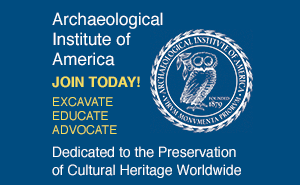

| |
| Yoo Hoo's Earliest Ancestor | November 15, 2007 |
| by Eric A. Powell | |
Chemistry traces the ancient obsession with chocolate drinks.
![[image]](thumbnails/chocolate5.gif) |
New evidence shows cacao pods were used by Mesoamericans to create a kind of chocolate drink 500 years earlier than scholars had suspected. (Courtesy United States Department of Agriculture) |
The bucolic Ul úa Valley in northern Honduras is famous as an excellent spot to grow Theobrama cacao, the tree whose pods are the source of chocolate (Theobrama means "food of the gods"). Now archaeologists have discovered the valley's inhabitants have known about cacao's culinary properties since at least 1100 B.C.
Chemical analysis of pottery sherds from the prosperous pre-Olmec village of Puerto Escondido, which sat on prime Ul úa Valley real estate, has turned up theobromine, a chemical produced by cacao and an unmistakable sign of chocolate. The find pushes back the date of the earliest cacao-based beverages at least 500 years.
Sherd found at Puerto Escondido dating to between 1400-1100 B.C. (Courtesy John Henderson)
When the conquistadors arrived in Mesoamerica, they observed Aztec rituals that incorporated a chocolate drink made from cacao seeds. The modern chocolate industry traces its roots to this beverage, which in turn is descended from the cacao drink consumed at Puerto Escondido. This fermented, proto-chocolate brew was likely made from the pulp surrounding the cacao seeds, rather than the seeds themselves.
Cornell University archaeologist John Henderson has worked in the Ul úa Valley for 25 years, and had his suspicions that cacao played an important role in the lives of the people of Puerto Escondido long before it appears in the archaeological record as a visible residue on artifacts. First occupied around 1500 B.C., Puerto Escondido was a village of some 200 people during the pre-Olmec period, too small to support the aristocrats that consumed chocolate in Aztec times. But large ceremonial buildings at the site hint that there were villagers who Henderson says were more "upwardly mobile" than others, and may have directed the village's religious life. Henderson and his team discovered pottery dating from 1400 B.C. to 900 B.C. at these ceremonial buildings that seemed similar to later ceramics used as ritual vessels to hold an alcoholic cacao drink.
![[image]](thumbnails/chocolate7.gif)
Deep deposits at Puerto Escondido where archaeologists recovered sherds that retained traces of cacao (Courtesy John Henderson)
"We found sherds that belonged to shallow bowls with thin walls, and small beak-like bottles that clearly held liquids," says Henderson. "You could see they were decorated with imagery, distinctive incisions, and geometric paint designs. Since we found the pottery concentrated around fancy buildings we concluded that the most likely thing was that there were upwardly mobile communities using these distinctive ceramics to make themselves special." These elites probably consumed the drink during rituals accompanying events like births, weddings, and coming of age ceremonies. "We thought we had a good circumstantial case for these ceramics to be elite cacao serving vessels. But with no visible residue, we didn't think there was any way to prove it."
![[image]](thumbnails/chocolate8.gif)
Pottery with Olmec motifs found at Puerto Escondido and dating to between 1100 and 900 B.C. (Courtesy John Henderson)
Thinking that was the end of the story, Henderson wrote an article on the probable function of the pottery for the Cornell Arts and Sciences newsletter. By chance, archaeochemist Patrick McGovern, a Cornell alumnus, read the piece and instantly saw the potential for further research. He had no problem persuading Henderson to arrange for a collection of the Puerto Escondido ceramics to be sent from Honduras to his laboratory at the University of Pennsylvania.
Though no residue remained on the surface of the pottery, McGovern was able to extract it from inside the ceramics. With help from Jeff Hurst, a chemist working for the Hershey Foods Technical Center, McGovern determined that 11 of the 13 sherds selected for testing once held cacao, proving Henderson's theory and extending the prehistory of chocolate back hundreds of years.
McGovern is now working with Dogfish Head Brewery to develop a recipe for an alcoholic cacao beverage using the Puerto Escondido evidence as a guide. As an experiment, they may add chile and honey to the concoction. Though neither ingredient turned up in the Puerto Escondido sherds, both are known from later Mesoamerican chocolate drinks.
The last time McGovern teamed up with the brewers at Dogfish Head the result was an intriguing re-creation of Neolithic Chinese wine, dubbed Chateau Jiahu. Check this space for a review of pre-Olmec Yoo Hoo sometime next year.
Eric A. Powell is a senior editor at ARCHAEOLOGY.
© 2007 by the Archaeological Institute of America archive.archaeology.org/online/features/chocolate/ |
Advertisement

Advertisement



![[image]](thumbnails/chocolate1.gif)
![[image]](thumbnails/chocolate6.gif)
![[image]](thumbnails/chocolate3.gif)



